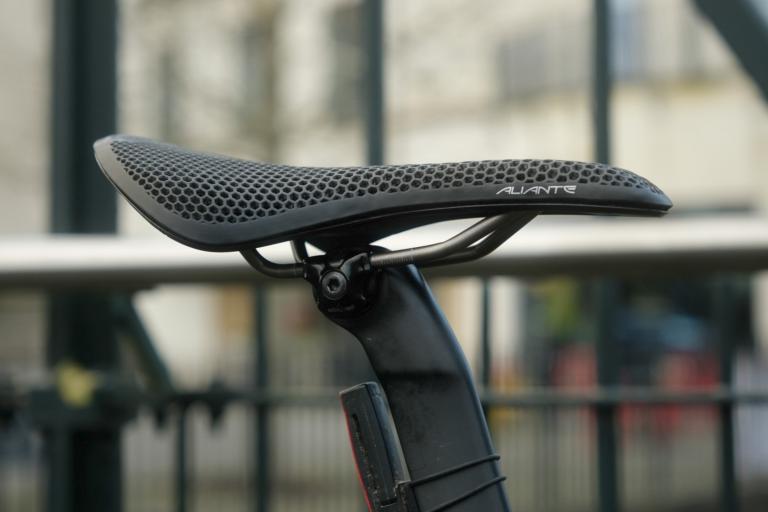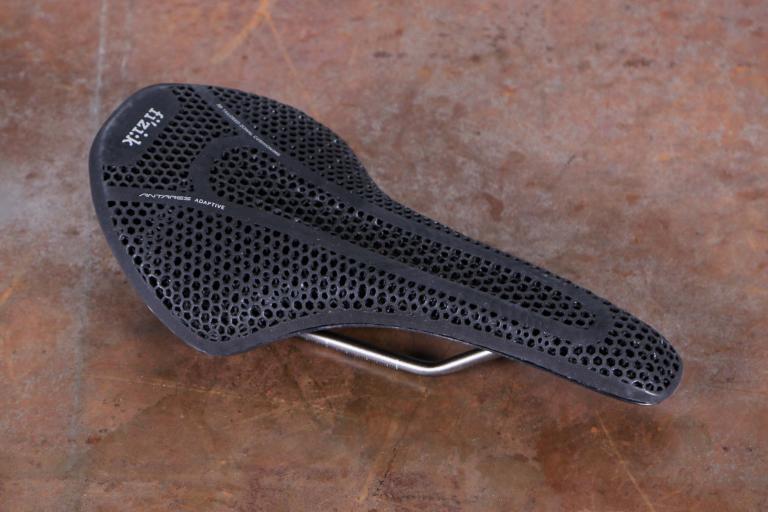- News
- Reviews
- Bikes
- Accessories
- Accessories - misc
- Computer mounts
- Bags
- Bar ends
- Bike bags & cases
- Bottle cages
- Bottles
- Cameras
- Car racks
- Child seats
- Computers
- Glasses
- GPS units
- Helmets
- Lights - front
- Lights - rear
- Lights - sets
- Locks
- Mirrors
- Mudguards
- Racks
- Pumps & CO2 inflators
- Puncture kits
- Reflectives
- Smart watches
- Stands and racks
- Trailers
- Clothing
- Components
- Bar tape & grips
- Bottom brackets
- Brake & gear cables
- Brake & STI levers
- Brake pads & spares
- Brakes
- Cassettes & freewheels
- Chains
- Chainsets & chainrings
- Derailleurs - front
- Derailleurs - rear
- Forks
- Gear levers & shifters
- Groupsets
- Handlebars & extensions
- Headsets
- Hubs
- Inner tubes
- Pedals
- Quick releases & skewers
- Saddles
- Seatposts
- Stems
- Wheels
- Tyres
- Health, fitness and nutrition
- Tools and workshop
- Miscellaneous
- Cross country mountain bikes
- Tubeless valves
- Buyers Guides
- Features
- Forum
- Recommends
- Podcast
review
£84.99
VERDICT:
Firm, comfortable saddle that's a solid platform for go-faster efforts
Weight:
217g
Contact:
At road.cc every product is thoroughly tested for as long as it takes to get a proper insight into how well it works. Our reviewers are experienced cyclists that we trust to be objective. While we strive to ensure that opinions expressed are backed up by facts, reviews are by their nature an informed opinion, not a definitive verdict. We don't intentionally try to break anything (except locks) but we do try to look for weak points in any design. The overall score is not just an average of the other scores: it reflects both a product's function and value – with value determined by how a product compares with items of similar spec, quality, and price.
What the road.cc scores meanGood scores are more common than bad, because fortunately good products are more common than bad.
- Exceptional
- Excellent
- Very Good
- Good
- Quite good
- Average
- Not so good
- Poor
- Bad
- Appalling
The Selle San Marco Mantra Dynamic Open-fit saddle is the sensibly priced kid brother to the Mantra Superleggera we tested previously. It's reasonably comfortable and still a competitive weight, but it's definitely a firm, performance-orientated saddle, not a comfy-as-a-couch seat for upright cruising.
If you like a firm, flat saddle, then the Mantra Dynamic is for you. It has a stiff, fibreglass-reinforced hull topped with a thin layer of closed-cell foam and a pressure-relieving gap down the middle, all of which comes together in a saddle that's very much a platform for going fast.
> Find your nearest dealer here
This is saddle design as performance-enhancement, not as bum-coddling, but it's nevertheless pretty comfortable, as long as you like your saddles firm and flat. There's an element of 'if you like this sort of thing then you'll like this' here, but that's hard to avoid with saddle reviews.
I used the Mantra for rides up to about 100km, and for 60-90-minute Zwift sessions, without discomfort. Indoor trainers are a strong test of a saddle because you spend so much of the time seated. I find that if a saddle's comfortable for a Zwift session, then it's almost certainly going to be comfortable for a lot longer on the road.
You definitely notice it less when you're making a big effort, and not just because the rest of you is complaining. Hunkering down in a deep tuck spreads your weight over more of the Mantra's surface, whereas sitting up concentrates it all on the point where your sit-bones contact the seat.
The Mantra Dynamic Open-fit is available in two widths, 136mm and 146mm, of which this is the wider. Selle San Marco says it weighs 233g, but it's 217g on our scales. That's good from a weight-weenie point of view, but maybe the missing weight is missing foam that would have made the Mantra a tiny bit comfier.
That weight is pretty much what you expect from a £90 saddle. You lose 30g or so by going up to the Selle San Marco Mantra Racing with its carbon-fibre-reinforced hull, and your wallet will be £30 lighter for it. From there you very quickly get into diminishing returns until you're forking out £300 for the 112g Mantra Superleggera.
I find I can get comfortable on a range of different saddle widths as long as the overall shape is right. Saddle fit isn't as simple as getting the right width, which is the impression you could get from some saddle makers who'd have you choose a saddle just by measuring your sit-bone width, and nor is it just down to how flexible you are. Instead, both of those factors matter, along with your riding position and the exact shape of your undercarriage.
> How to choose the right saddle
And some of us are more adaptable than others. Team GB physiotherapist and bike fit guru Phil Burt calls those who can handle significant changes in position 'macro-absorbers', as opposed to 'micro-adjusters' who can tolerate only very small changes from their accustomed position. I suspect this applies to saddles too: some of us can adapt to different seats, some of us can't.
I adapted to the Mantra in a few rides, even though it's very different from my usual Fizik Aliante and Brooks Cambium saddles, so even if you don't usually like this sort of thing, you might find the Mantra is a pleasant surprise after all. If your riding is about going fast, it's a seat you should definitely try.
Verdict
Firm, comfortable saddle that's a solid platform for go-faster efforts
road.cc test report
Make and model: Selle San Marco Mantra Dynamic Saddle
Size tested: 278 x 146 mm, Wide Fit
Tell us what the product is for, and who it's aimed at. What do the manufacturers say about it? How does that compare to your own feelings about it?
Selle San Marco says: "An affordable performance orientated model, the Mantra Dynamic is a great looking, flat profiled, race orientated saddle, with Manganese rails, from Selle San Marco. The Mantra looks amazing with it's the smart graphics and aggressive styling & is perfectly suited to match most advanced framesets on the market today. The central relief zone is long enough to work in all the riding positions and the structural stability bridge prevents unwanted flex and twist. Mantra is suited for cyclists who prefer to use the entire length of the saddle."
Can't argue with any of that.
Tell us some more about the technical aspects of the product?
FEATURES
Rail: Manganese / Matt Black
Shell: Glass Fibre Reinforced
Padding: Biofoam
Cover: Microfeel
Size Narrow: 278 x 136mm
Size Wide: 278 x 146mm
Weight: 228g / 233g
Saddle Profile: Open / Flat
Colours: Black/Black
MANGANESE RAILS
This material increases the characteristics of the frame by improving its resistance to wear caused by shocks. This type of rail is used on our Dynamic level saddles.
GLASS FIBRE REINFORCED SHELL
Nylon charged with a high percentage of glass fibre in order to get a perfect balance between resistance and lightweight.
BIOFOAM
Biodynamic structure that follows the movements of the pelvis during pedalling, guarantees comfort, reduced weight, lasting resistance and ideal support. The 'closed cells' surface ensures water is repelled from the padding.
MICROFEEL COVER
Breathable and hard wearing cover. It is lighter than traditional materials and less deformable. Anti-skid effect with an extraordinary grip on the saddle. Biocompatible material.
NEW ERGONOMY
Perfect balance between support zone and relief zone. The "big hole" helps maintain comfort under pressure and offers day long support and comfort: the central relief zone is long enough to work in all riding positions but a structural stability bridge prevents unwanted flex and twist.
Rate the product for quality of construction:
8/10
Rate the product for performance:
9/10
Rate the product for durability:
8/10
Rate the product for weight (if applicable)
8/10
Rate the product for comfort (if applicable)
7/10
Rate the product for value:
8/10
Tell us how the product performed overall when used for its designed purpose
Yep, it supports your bum. More importantly, it's firm enough that it fulfils its aim of being a performance-orientated bum support. It's less suitable for casual cruising on a more upright bike, though.
Tell us what you particularly liked about the product
Firmness, sensible weight, good construction quality.
Tell us what you particularly disliked about the product
Nothing.
Did you enjoy using the product? Yes
Would you consider buying the product? Yes
Would you recommend the product to a friend? Yes
Use this box to explain your score
This is a decent, well-made, go-faster saddle. There's nothing super-special about it, but it does what it does well. A solid 8.
About the tester
Age: 48
I usually ride: Scapin Style My best bike is:
I've been riding for: Over 20 years I ride: Most days I would class myself as: Expert
I regularly do the following types of riding: commuting, touring, club rides, general fitness riding, mountain biking
John has been writing about bikes and cycling for over 30 years since discovering that people were mug enough to pay him for it rather than expecting him to do an honest day's work.
He was heavily involved in the mountain bike boom of the late 1980s as a racer, team manager and race promoter, and that led to writing for Mountain Biking UK magazine shortly after its inception. He got the gig by phoning up the editor and telling him the magazine was rubbish and he could do better. Rather than telling him to get lost, MBUK editor Tym Manley called John’s bluff and the rest is history.
Since then he has worked on MTB Pro magazine and was editor of Maximum Mountain Bike and Australian Mountain Bike magazines, before switching to the web in 2000 to work for CyclingNews.com. Along with road.cc founder Tony Farrelly, John was on the launch team for BikeRadar.com and subsequently became editor in chief of Future Publishing’s group of cycling magazines and websites, including Cycling Plus, MBUK, What Mountain Bike and Procycling.
John has also written for Cyclist magazine, edited the BikeMagic website and was founding editor of TotalWomensCycling.com before handing over to someone far more representative of the site's main audience.
He joined road.cc in 2013. He lives in Cambridge where the lack of hills is more than made up for by the headwinds.











"you give 100% to your sport and your country" – hoping in exchange to gain a considerable amount of fame and accompanying fortune, it's not really...
BOLAS tho...
Where do drivers think that tyre or brake disc that started on 8mm and is now 3 mm has gone??
Those figures are also just percentages OF the number of reports by both road users....
Oh! It's a classic! At the entrance to Keynsham a picture perfect "who is this space intended for? Why are we pretending it's not just for those...
As I said below, being from the same neck of the woods I know that the primary demographic of the core support of WDAG is folks living in the roads...
There are no fixed traffic radar traps in Ireland. They do have big mobile van that has a radar in it, but it also has a big warning on it that it...
The chart shows the places where Shimano sends its products. My guess is that a lot of the product going to Taiwan, and probably China too, ends up...
Pfff! Garstang was way ahead with this radical new redevelopment technique. Last April
The person is in a Public place, with no reasonable expectation of privacy...